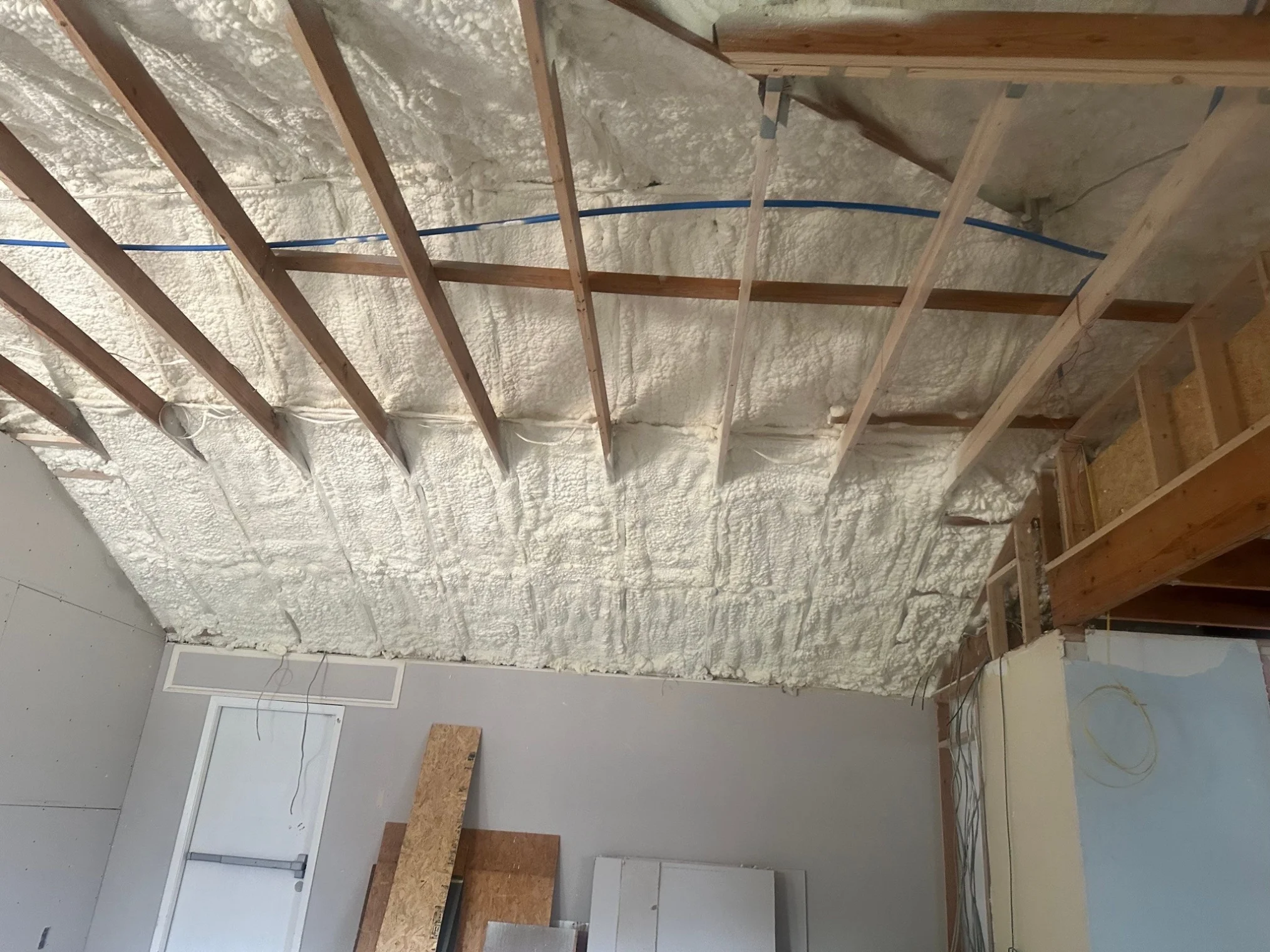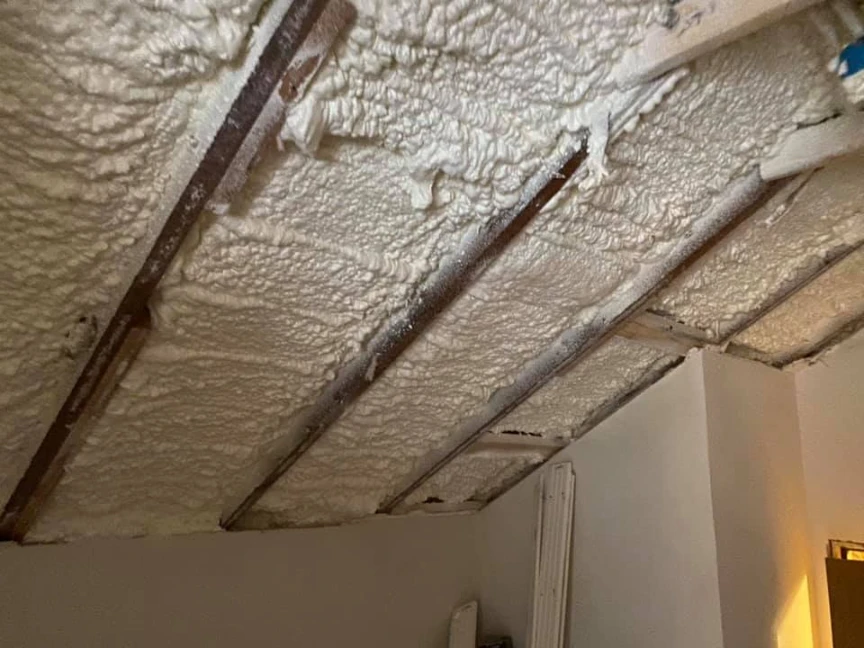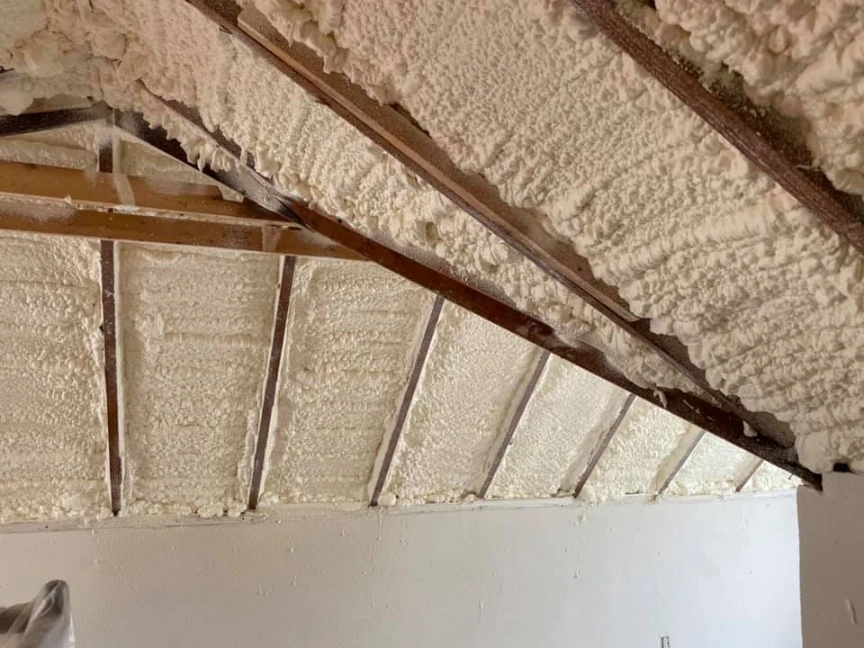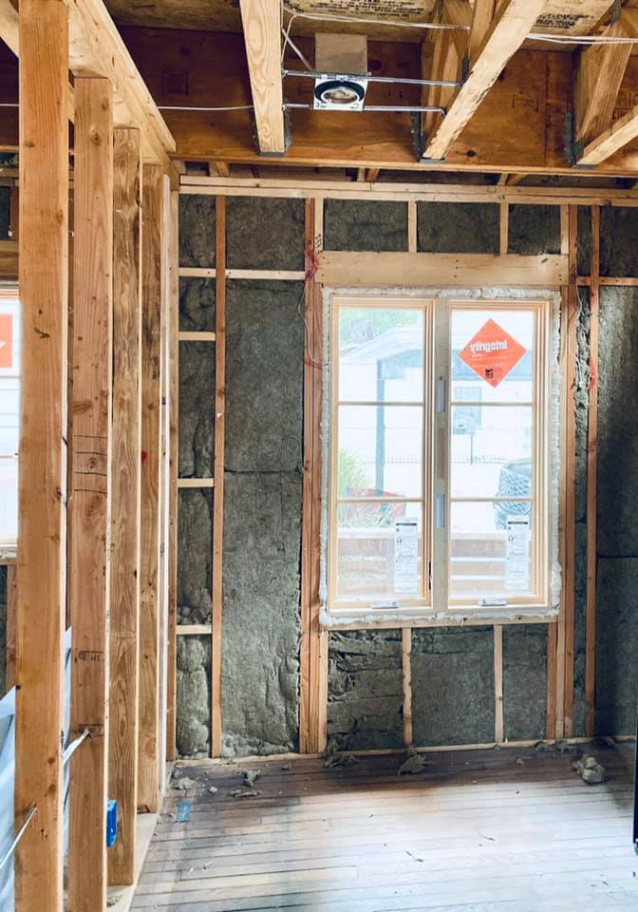Proper insulation is the single most effective barrier a home has against the intense Texas heat and escalating utility costs. It works by resisting the transfer of heat, keeping the cool, conditioned air inside your home while blocking the hot, humid air from getting in. This simple function dramatically reduces the amount of work your air conditioning system has to do to maintain a comfortable temperature. For Kingsland homeowners, this translates directly into lower energy consumption and more predictable monthly bills, especially during the long, hot summers.
This guide explains how different insulation types function, where homes commonly lose energy, and what factors to consider before making an upgrade. The information here is based on extensive field experience in the Central Texas climate, providing a clear path to improving a home’s energy efficiency.
The Science of Heat Flow and Insulation
To understand how insulation works, it’s helpful to know a bit about how heat moves. Heat naturally flows from warmer areas to cooler areas through three primary methods: conduction, convection, and radiation.
- Conduction: Heat traveling through solid materials. Think of how a metal spoon gets hot when left in a pot of boiling water. In a home, heat conducts through studs, drywall, and siding.
- Convection: Heat moving through liquids or gases. This is how hot air circulates from your attic into your living spaces.
- Radiation: Heat traveling in a straight line through space. This is the heat you feel from the sun or a hot stovetop. It warms your roof, which then radiates heat down into the attic and the rest of the house.
Insulation materials are engineered to counter these processes. Materials like fiberglass and cellulose trap air pockets to slow convective and conductive heat flow. Radiant barriers, often used in attics, have a reflective surface that blocks radiant heat from entering the home.
Choosing the Right Insulation for Your Home
Different areas of a home have different needs, and various insulation materials are available to meet them. The most common options for properties in the Kingsland area include spray foam, fiberglass, and cellulose.
| Insulation Type | R-Value Per Inch (Approx.) | Key Advantages | Common Applications |
|---|---|---|---|
| Open-Cell Spray Foam | R-3.5 to R-3.8 | Excellent air barrier, expands to fill gaps, provides sound dampening. | Walls, roof decks, under floors. |
| Closed-Cell Spray Foam | R-6.0 to R-7.0 | High R-value, acts as an air and moisture barrier, adds structural rigidity. | Crawl spaces, metal buildings, areas needing moisture control. |
| Fiberglass (Batts & Blown-in) | R-2.2 to R-4.3 | Cost-effective, naturally non-combustible, widely available. | Attics, walls, floors. |
| Cellulose (Blown-in) | R-3.2 to R-3.8 | Made from recycled paper, good at filling irregular spaces, treated for fire resistance. | Attics, dense-packing existing walls. |
Bonus Tip: No amount of insulation can work effectively if your home has air leaks. Before adding new insulation in Kingsland, TX, it’s a good practice to air seal major gaps in the attic floor, around plumbing pipes, and near light fixtures. This prevents conditioned air from escaping and unconditioned air from entering.
How Insulation Reduces HVAC Strain and Saves Money
A properly insulated home acts like a well-sealed cooler. It holds the desired temperature for longer periods, meaning your air conditioner doesn’t have to cycle on as frequently. According to the U.S. Department of Energy, a well-insulated attic can save homeowners anywhere from 10% to 50% on their heating and cooling bills.
This reduced runtime doesn’t just lower your monthly electricity bill; it also extends the lifespan of your HVAC equipment. A system that isn’t constantly struggling to keep up with temperature swings will experience less wear and tear on its components, leading to fewer costly repairs and a longer operational life. A report from Remodeling Magazine shows that an attic insulation upgrade is one of the few home improvement projects that can return over 100% of its cost at resale, making it a sound financial decision.
Common Weak Points for Energy Loss in a Home
Even a home that seems well-built can have hidden spots where energy is being lost. Identifying these areas is the first step toward fixing the problem.
- The Attic: This is the biggest offender. An under-insulated attic allows scorching summer heat to radiate down into your living space, forcing your AC to work overtime.
- Crawl Spaces: Uninsulated or poorly insulated crawl spaces can let in moisture and unconditioned air, affecting the temperature and air quality of the rooms above.
- Exterior Walls: Gaps in wall insulation, especially in older homes, create cold spots in the winter and hot spots in the summer.
- Rim Joists: The area where the foundation meets the wooden frame of the house is a common source of air leakage.
Things to Consider Before Making a Decision
Before you invest in an insulation upgrade, it’s important to evaluate your property’s specific needs.
R-Value Recommendations
R-value measures an insulation’s ability to resist heat flow. The higher the R-value, the better it insulates. For the climate zone that includes Kingsland, TX, ENERGY STAR recommends an R-value of R30 to R60 for attics. Walls and floors have different recommendations based on their construction.
Material Selection
The best material depends on the application. For example, closed-cell spray foam is an excellent choice for crawl spaces because it resists moisture, while blown-in cellulose or fiberglass can be a cost-effective way to top up existing attic insulation.
Long-Term Value
Think of insulation as a one-time investment that pays dividends for years. While some materials have a higher upfront cost, they may offer better long-term performance and energy savings, resulting in a quicker payback period.
Bonus Tip: When getting quotes, make sure the proposal includes details on air sealing. An installer who understands building science knows that insulation and air sealing work together to create a truly energy-efficient home.
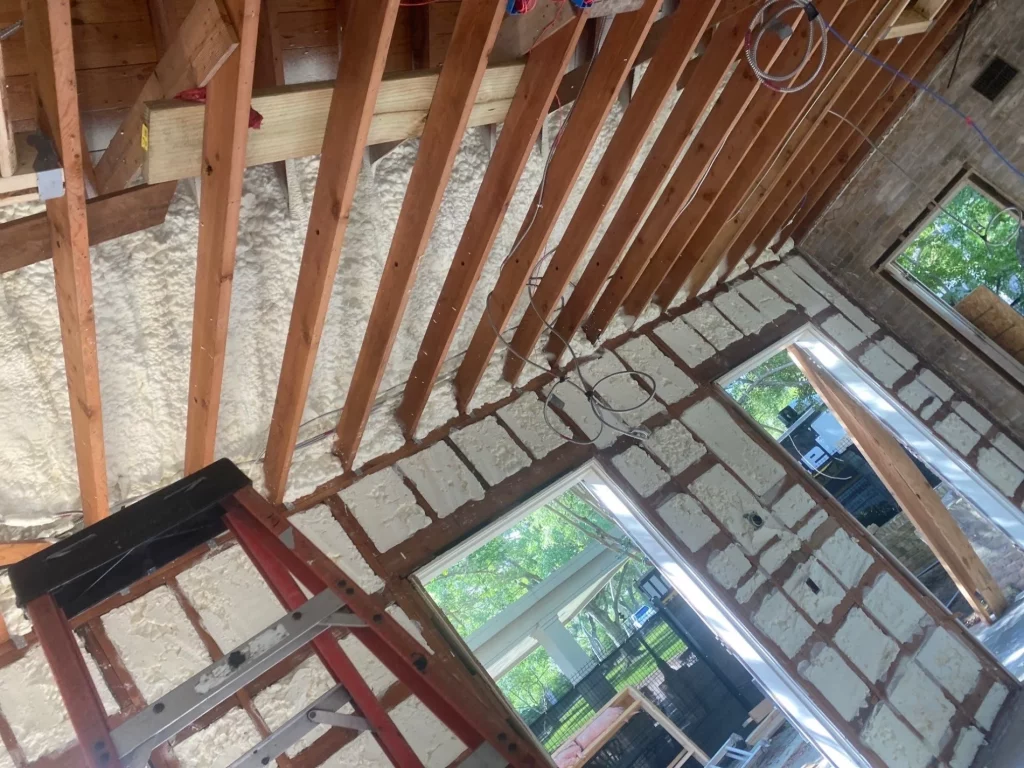
Frequently Asked Questions About Home Insulation
Can you have too much insulation?
It’s technically possible but highly unlikely in a standard home. The more important issue is ensuring the home still has adequate ventilation to manage moisture, especially in attics and crawl spaces.
Does insulation reduce noise?
Yes, many types of insulation, particularly spray foam and cellulose, are excellent at dampening sound. They can reduce noise from outside and between rooms.
How long does insulation last?
The lifespan depends on the material. Fiberglass and spray foam can last for 80 years or more if they remain dry and undisturbed. Cellulose may settle over time and require a top-up after 15 to 20 years to maintain its original R-value.
What is the best insulation for a metal building in Texas?
Closed-cell spray foam is generally the top choice for metal buildings. It adheres directly to the metal panels, preventing condensation (which can lead to rust) and providing a high R-value in a slim profile.
Will new insulation help with high indoor humidity?
Yes, particularly air-sealing insulation like spray foam. By creating an air barrier, it stops humid, unconditioned air from entering the home, allowing your HVAC system to control the indoor climate more effectively.
How does an uninsulated garage affect my home’s energy bills?
If your garage is attached to the house, an uninsulated garage door and walls act as a massive source of heat gain. This heat transfers through the shared wall into your living space, making your AC work harder and increasing your bills.
Is it necessary to remove old attic insulation before adding new material?
Not always. If the existing insulation is dry, clean, and free of mold or pests, new insulation (typically loose-fill) can be installed right on top of it. However, if the old insulation is wet, compressed, or contaminated, it should be removed first.
Final Thoughts on Protecting Your Investment
In the face of rising energy prices, upgrading your home’s insulation is a proactive and effective step toward managing utility expenses. It’s a permanent improvement that enhances comfort, reduces energy consumption, and adds to the property’s value. Before moving forward, assess your home’s vulnerabilities, understand the recommended R-values for our region, and consider which material best fits your needs and budget.
Get a Clear Assessment
To understand how insulation in Kingsland, TX can best serve your specific property, a professional evaluation is essential. For a detailed assessment and straightforward advice, connect with the team at Stellrr Insulation & Spray Foam. You can reach out by phone at (512) 710-2839 or send an email to info@stellrr.com to discuss your home’s energy efficiency needs.
Sources
- U.S. Department of Energy – Provides information on how weatherization, including insulation and air sealing, can lead to significant energy savings for homeowners.
- Remodeling Magazine – Publishes an annual Cost vs. Value report that details the return on investment for various home improvement projects, including attic insulation.
- ENERGY STAR – Offers recommendations for insulation levels (R-values) based on climate zones across the United States.


